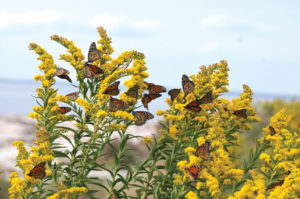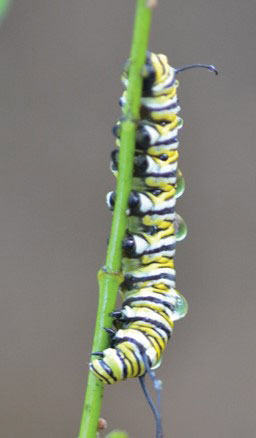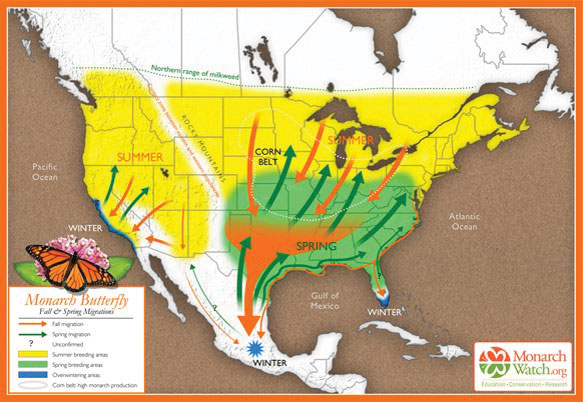by Dr. Lenore Tedesco
 It’s fall in Cape May and that means one thing – it’s time for the great migrations of wildlife headed south. Cape May sits in one of the world’s great migration corridors and in addition to being on one of these great highways, our area is also a stopover point. Think of it as a great truck stop on an interstate system. Cape May is also an important breeding area for Monarchs as well as a stopover for migratory Monarchs as they make their way south to the mountains of Mexico to spend the winter.
It’s fall in Cape May and that means one thing – it’s time for the great migrations of wildlife headed south. Cape May sits in one of the world’s great migration corridors and in addition to being on one of these great highways, our area is also a stopover point. Think of it as a great truck stop on an interstate system. Cape May is also an important breeding area for Monarchs as well as a stopover for migratory Monarchs as they make their way south to the mountains of Mexico to spend the winter.
Monarch butterflies are remarkable and tough. Every time I think of their life history and journey, I marvel at all the things about nature that we just don’t understand. It takes four generations of Monarchs to complete a full migration cycle! Monarchs arrive in central Mexico in October and overwinter in the mountains where they huddle in great masses and rely on mild weather and shared body heat to stay warm. In February, hibernating monarchs reawaken, find a mate, and begin the flight northward. They will make it into south Texas to lay their eggs before they die. These special monarchs have lived about 6 months through the long winter and are different from the other generations that make the Monarch migration work.
 In March, this first generation is born and goes through the various life cycle stages – egg, caterpillar, chrysalis and adult butterfly. These adults fly further north moving into the mid-Atlantic where they lay eggs and die. This 2nd generation is born in May and goes through the various life stages. They have moved further north where they lay eggs and die. The 3rd generation moves into our area, and further north arriving in July. Perhaps you have noticed that we don’t see Monarch butterflies until later in the summer. This is why – it’s taken them 3 generations and flying from Mexico to get here! These butterflies lay eggs and it is their offspring – the 4th generation – born in September that are the ones that will migrate to Mexico and overwinter there to start the journey back north again next spring.
In March, this first generation is born and goes through the various life cycle stages – egg, caterpillar, chrysalis and adult butterfly. These adults fly further north moving into the mid-Atlantic where they lay eggs and die. This 2nd generation is born in May and goes through the various life stages. They have moved further north where they lay eggs and die. The 3rd generation moves into our area, and further north arriving in July. Perhaps you have noticed that we don’t see Monarch butterflies until later in the summer. This is why – it’s taken them 3 generations and flying from Mexico to get here! These butterflies lay eggs and it is their offspring – the 4th generation – born in September that are the ones that will migrate to Mexico and overwinter there to start the journey back north again next spring.
I often ponder this. How is it that a creature as seemingly delicate and fragile can fly that far? How do they transmit the information from generation to generation about their role? None of them have made the flight – or completed the segment. And they pass the information through four generations to make one complete migration.
Monarchs are in trouble though and need our help. Thankfully, there’s a lot we can do to help. Two things are critical – the availability of milkweed for caterpillars, and the availability of flowers in September and October for fuel for the migrants. Maintaining native plants and adding milkweed to your garden is a great way to help. Avoiding herbicides and pesticides is important too. Stop by the gardens at the Institute, the Stone Harbor Bird Sanctuary or come to our annual plant sale each May where we offer native plants and an assortment of milkweed plants to add to your garden.
Making your patch of land welcoming and suitable for these travelers will not only put out the welcome mat so you can enjoy their visits, but also helps give them a helping hand along the way. I hope the next time you see a Monarch, you will be as amazed as I am.

